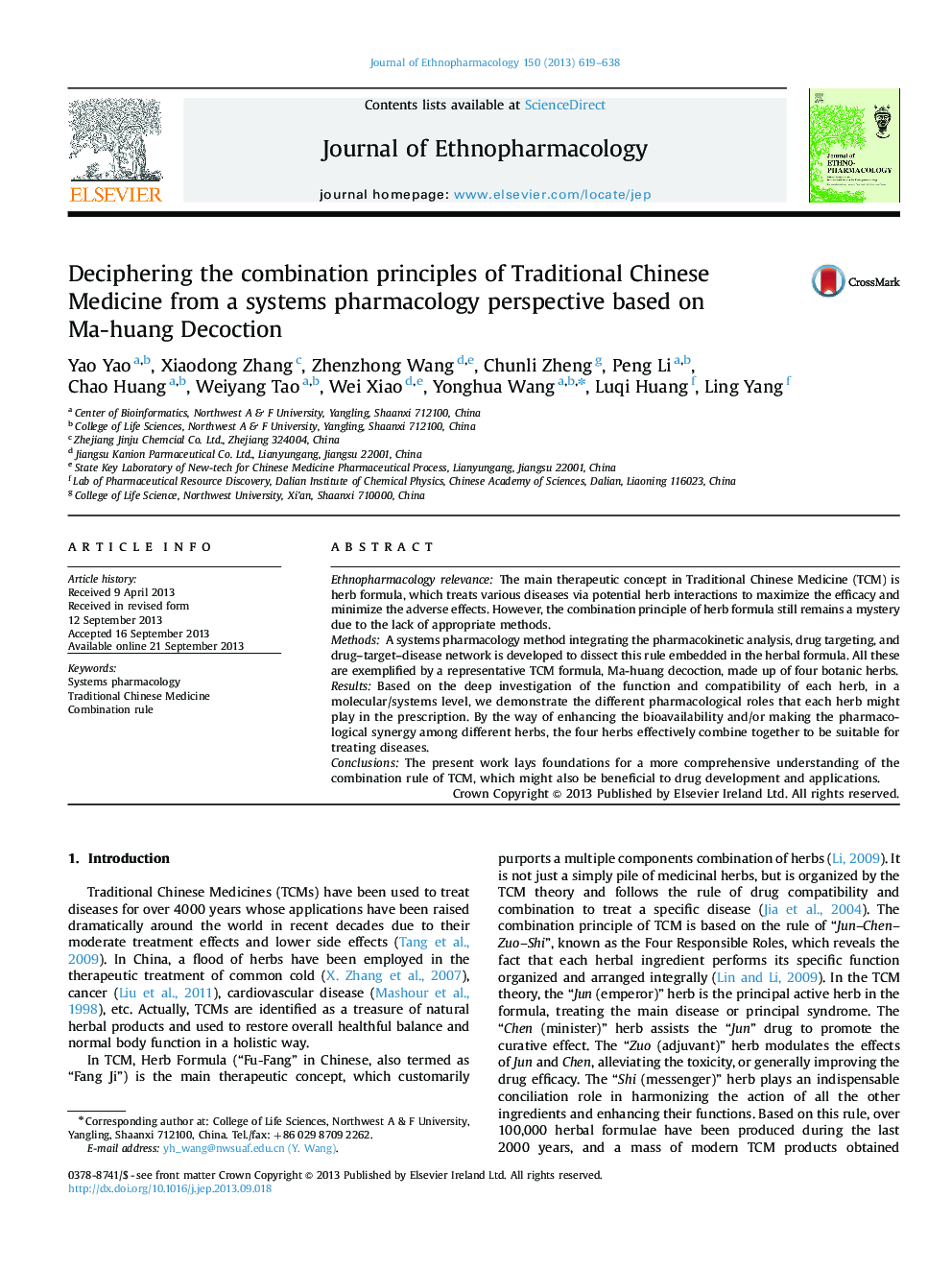| Article ID | Journal | Published Year | Pages | File Type |
|---|---|---|---|---|
| 2545452 | Journal of Ethnopharmacology | 2013 | 20 Pages |
Ethnopharmacology relevanceThe main therapeutic concept in Traditional Chinese Medicine (TCM) is herb formula, which treats various diseases via potential herb interactions to maximize the efficacy and minimize the adverse effects. However, the combination principle of herb formula still remains a mystery due to the lack of appropriate methods.MethodsA systems pharmacology method integrating the pharmacokinetic analysis, drug targeting, and drug–target–disease network is developed to dissect this rule embedded in the herbal formula. All these are exemplified by a representative TCM formula, Ma-huang decoction, made up of four botanic herbs.ResultsBased on the deep investigation of the function and compatibility of each herb, in a molecular/systems level, we demonstrate the different pharmacological roles that each herb might play in the prescription. By the way of enhancing the bioavailability and/or making the pharmacological synergy among different herbs, the four herbs effectively combine together to be suitable for treating diseases.ConclusionsThe present work lays foundations for a more comprehensive understanding of the combination rule of TCM, which might also be beneficial to drug development and applications.
Graphical AbstractFigure optionsDownload full-size imageDownload high-quality image (253 K)Download as PowerPoint slide
